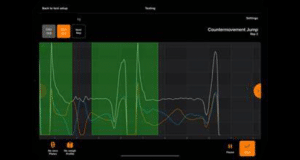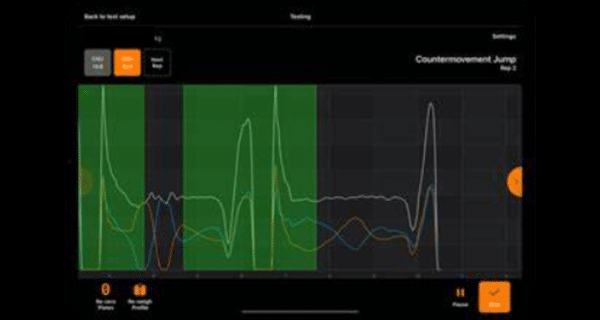
What are Force Plates?
Force plates are platforms containing sensors that measure the force exerted by an athlete when performing certain movements such as walking, running or jumping.
What do Force Plates Measure?
By analyzing the data obtained from force plate testing, we can gain insights into factors such as:
- Force production
- Reactive strength
- Power output/explosiveness
- Balance/stability
- Left-to-right asymmetries
- Jump height
- Walking/running gait
Who Uses Force Plates?
Force Plates are used in a variety of settings such as:
- High performance studios
- Physiotherapy practices
- Biomechanic laboratories
- Sports science research laboratories
Why is force plate testing important for high performance athletes?
Baseline Information
Force plate testing provides a benchmark for athlete movement patterns & mechanics. This gives coaches an understanding of an athlete’s needs & allows for the design of an individualized program.
Athlete Monitoring
Regular testing is important for monitoring an athlete’s performance over time and identifying their readiness to train/compete. This can provide insider information for modifying training loads when accompanied with wellness data and conversations with athletes surrounding training loads and fatigue.
Injury Prevention
Force plate testing can identify biomechanical imbalances/weaknesses that may increase the risk of injury. Coaches may address these issues through specific training in an attempt to prevent injuries before they occur.
Injury Rehabilitation
Force plate testing can play a crucial role in the monitoring of an athlete’s rehabilitation progress and assisting return-to-play decision making safely & efficiently.
Examples of Force Plate Testing
- Countermovement Jump – Measures vertical power output.
- Drop Jump – Assesses reactive strength and stretch-shortening cycle ability.
- Single Leg Jump – Determine inter-limb asymmetries.
- Repeat Hop Test – Measures ankle strength and stiffness.
Conclusion
Force plates are a valuable tool in high performance settings. They provide definitive data & visualization of how an athlete is moving. This information is useful for coaches to discuss the ‘why’ with their athletes about program design and injury rehabilitation processes. As technology evolves, the significance of force plates in athlete performance remains paramount, making them a cornerstone of modern high performance programs.
VALD Performance | Technology for Human Performance.
References:
- Schuster, J., Bove, D. and Little, D., 2020. Jumping towards best-practice: Recommendations for effective use of force plate testing in the NBA. Sport Performance & Science Reports, 1(97).

